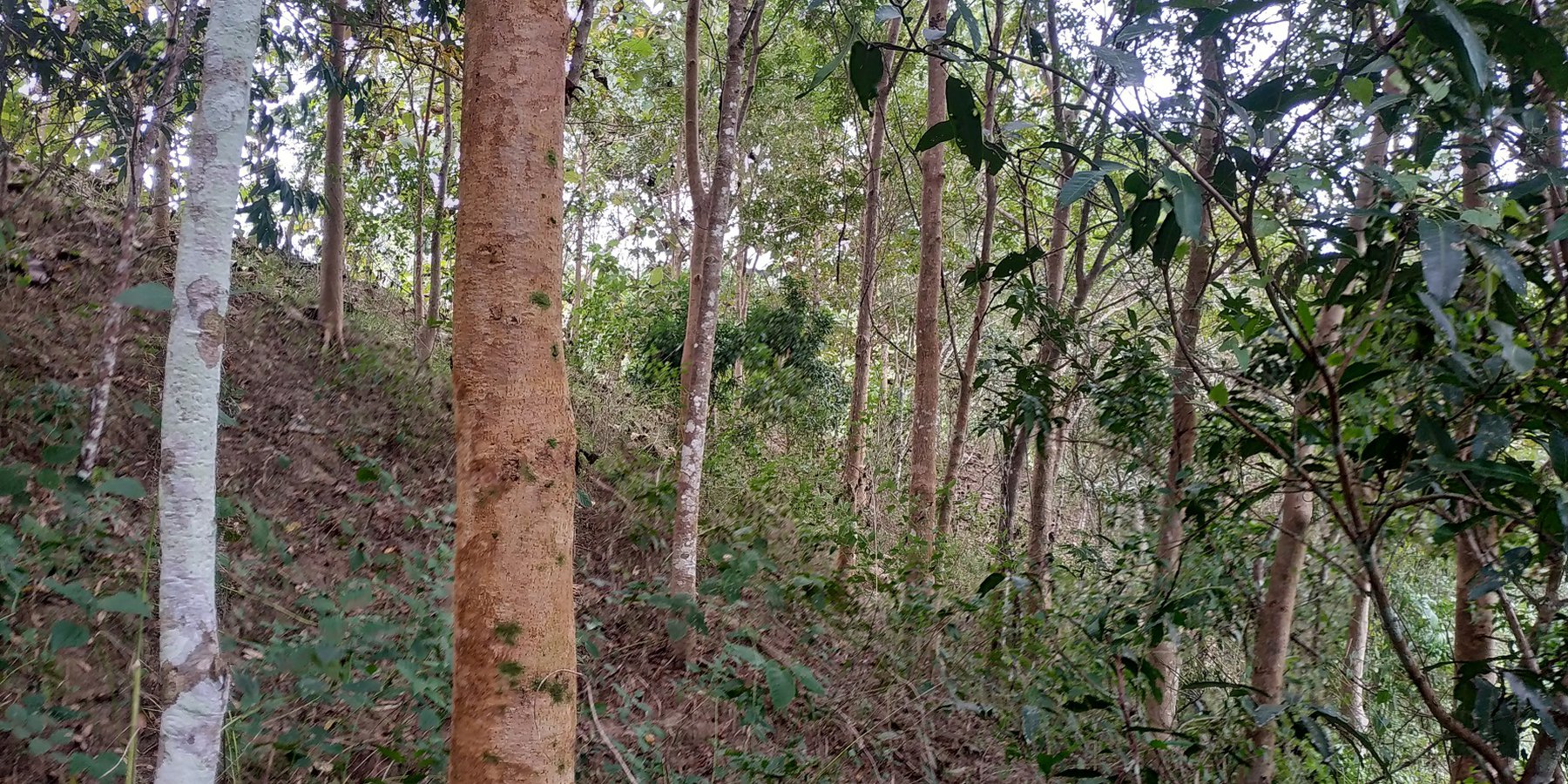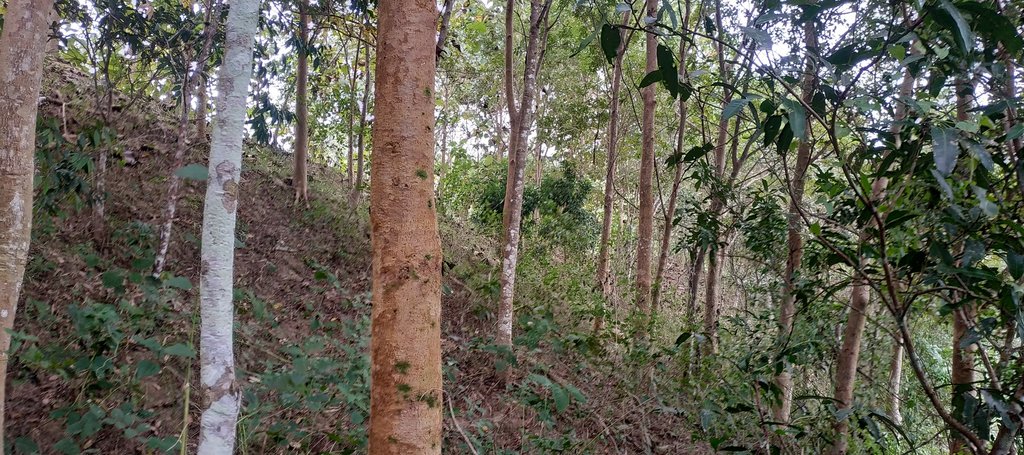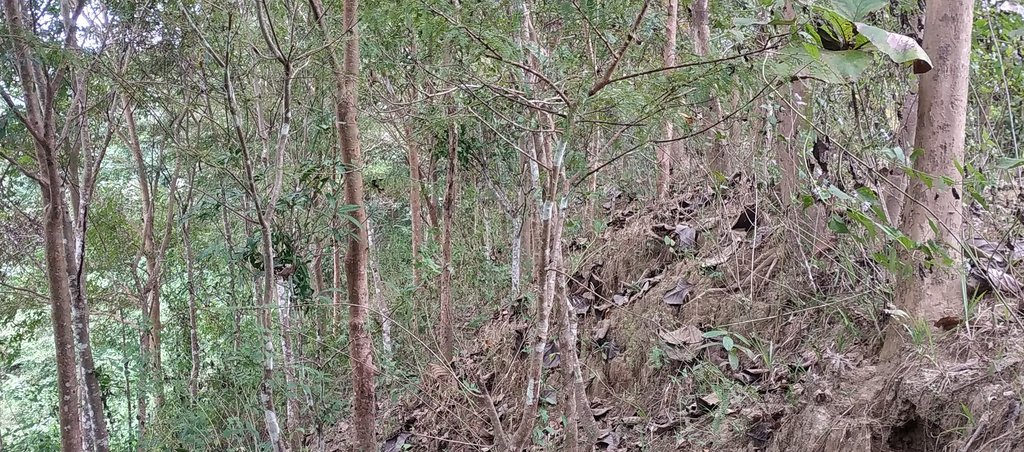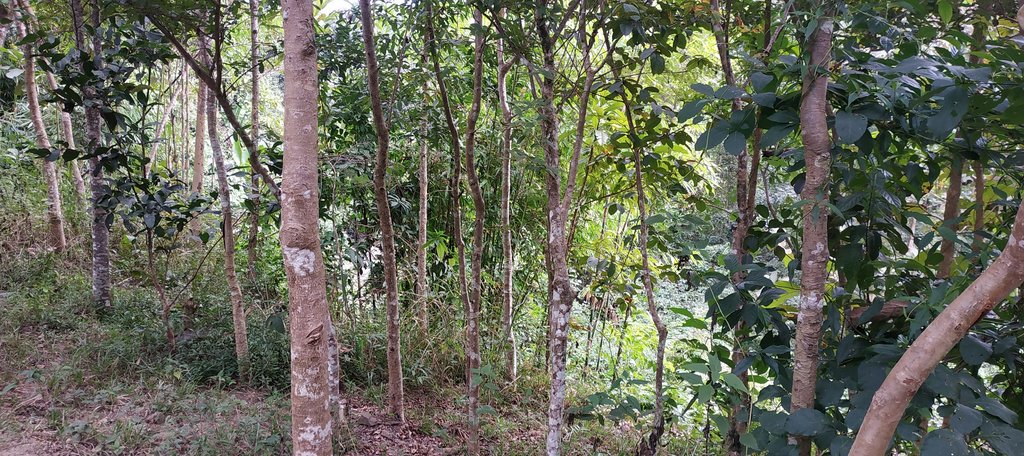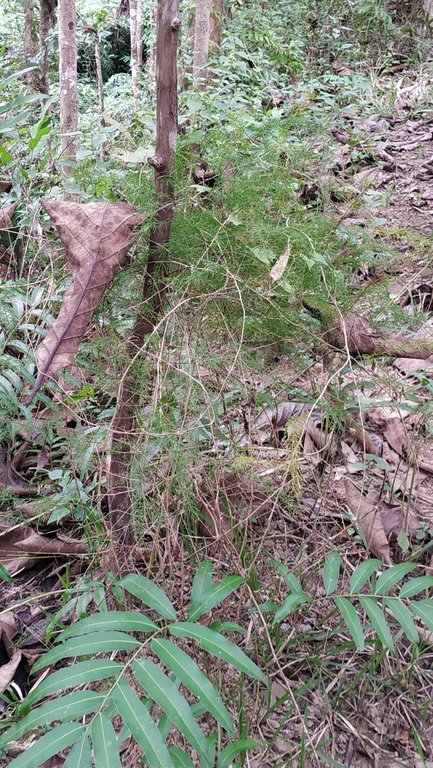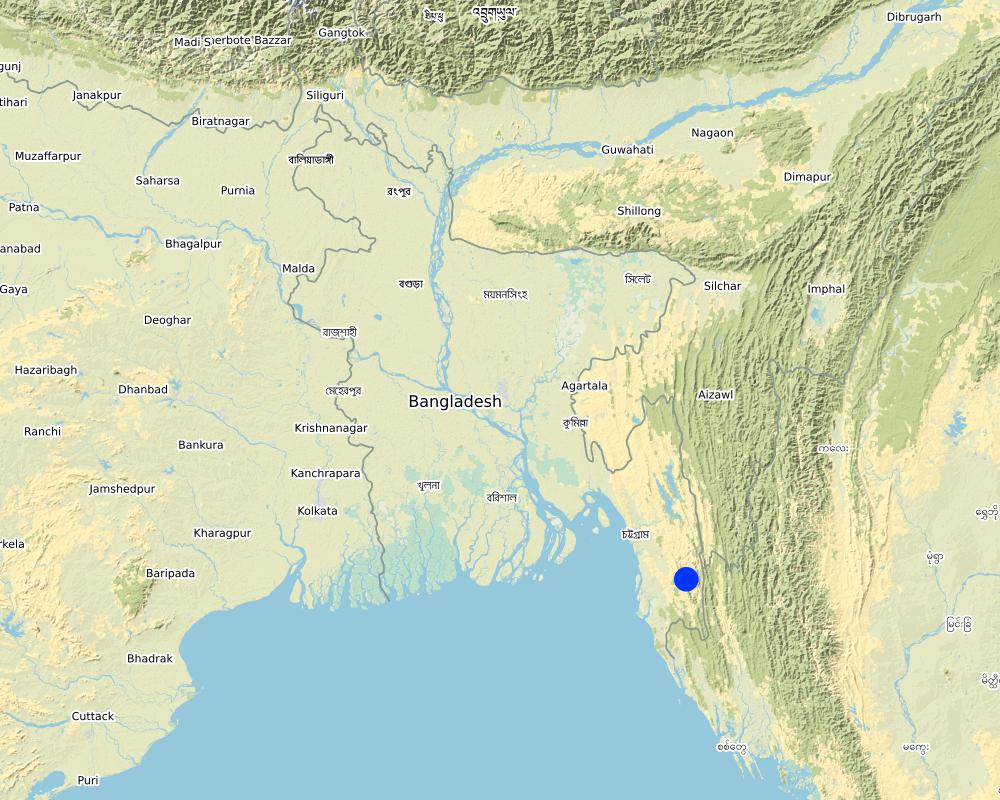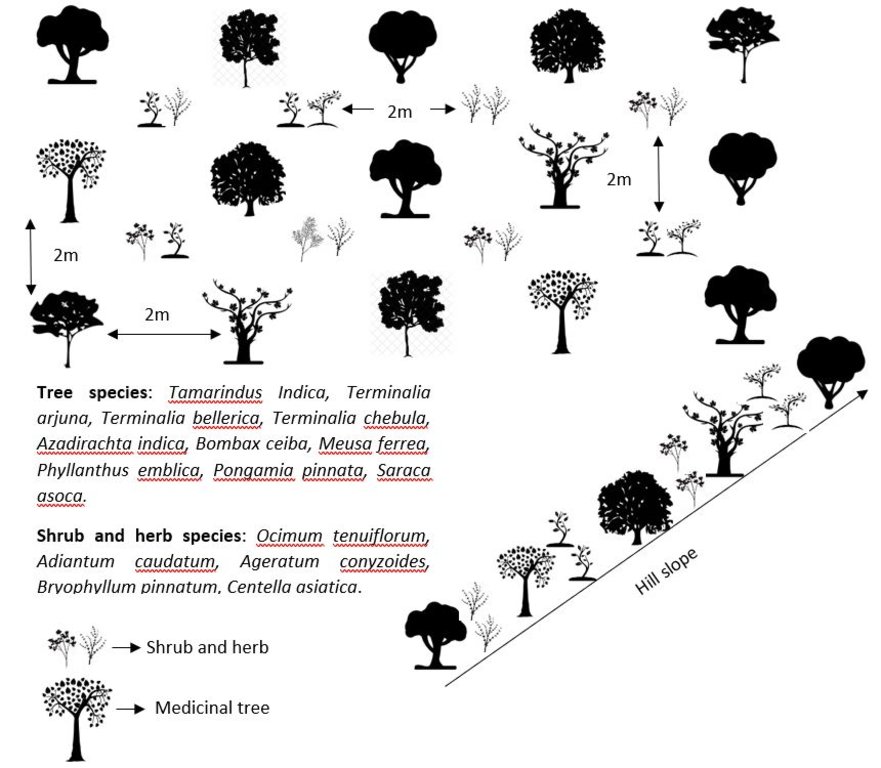Protection from land degradation through conservation of medicinal plants by involving ethnic communities. [孟加拉国]
- 创建:
- 更新:
- 编制者: Fazlay Arafat
- 编辑者: Mutasim Billah, Md. Arfanuzzaman
- 审查者: Nicole Harari, Rima Mekdaschi Studer, Ursula Gaemperli
Herbal medicine plantation to stop land degradation
technologies_4287 - 孟加拉国
查看章节
全部展开 全部收起1. 一般信息
1.2 参与该技术评估和文件编制的资源人员和机构的联系方式
关键资源人
土地使用者:
Thoai Uba
Bolipara Nari Kalyan Somity (BNKS)
孟加拉国
土地使用者:
Shing Nue Hla
Bolipara Nari Kalyan Somity (BNKS)
孟加拉国
有助于对技术进行记录/评估的项目名称(如相关)
Decision Support for Mainstreaming and Scaling out Sustainable Land Management (GEF-FAO / DS-SLM)有助于对技术进行记录/评估的机构名称(如相关)
FAO Bangladesh (FAO Bangladesh) - 孟加拉国有助于对技术进行记录/评估的机构名称(如相关)
IUCN-The World Conservation Union (IUCN-The World Conservation Union) - 孟加拉国1.3 关于使用通过WOCAT记录的数据的条件
编制者和关键资源人员接受有关使用通过WOCAT记录数据的条件。:
是
1.4 所述技术的可持续性声明
这里所描述的技术在土地退化方面是否存在问题,导致无法被认为是一种可持续的土地管理技术?:
否
2. SLM技术的说明
2.1 技术简介
技术定义:
The indigenous community in Bolipara village of the Thanchi upazlia (sub-district) of the Bandarban district are reducing or preventing land degradation through the cultivation and conservation of medicinal plants. This practice provides the raw material needed, by local traditional healers, to produce herbal medicines for the indigenous and tribal peoples.
2.2 技术的详细说明
说明:
The Chittagong Hill Tracts (CHT) are well-renowned for its unique physiography that harbors rich biodiversity, and for its distinct and rich culture, traditional, and customary practices because of the predominance of many indigenous communities. It is also one of the few remaining areas in Bangladesh where traditional environmental knowledge (TEK) plays an important part in the daily life and customary practices of indigenous communities. Medicinal plants, of course, are a key component of the local health care system. However, the production and use of traditional medicines (mostly herbal in nature) substantively declined as medicinal plants have become rarer – this is due to rapid changes in land use patterns driven by population growth and economic trends. The risk that interest in and local knowledge of medicinal plant use will reduce or even disappear over time as has occurred in other parts of the world, changing the very nature of indigenous life. Land degradation is another major ecological concern for this area. Shifting cultivation with curtailed fallow periods, deforestation, and unplanned cultivation along the hill slopes has caused land degradation in Bolipara union. It is located in Thanchi upazila (longitude 21º78´, latitude 92º42´) under Bandarban hill district of Bangladesh. The total population of the union is more than 10,000. The ethnic communities living in the area include Bowm, Chakma, Khumi, Marma, Mru, Tripura and Chack. Most of the family depends on agriculture and horticulture for their livelihood. BNKS (Bolipara Nari Kalyan Somity) is an NGO who work here to promote the socio-economic and cultural status of the marginalized and socially excluded peoples. ‘Bolipara Kobiraj Kalyan Somiti’ is another local institution of traditional herbal healers.
In 2008, International Union for Conservation of Nature (IUCN) took the initiative to reduce and prevent land degradation in Bolipara through the cultivation and conservation of medicinal plants by indigenous communities. While forest conversion reduces the diversity and availability of medicinal plants, reforestation with medicinal plants can promote and accelerate forest succession on a previously deforested site. As a part of the IUCN project, medicinal tree species like Tamarindus indica, Terminalia arjuna, Terminalia bellerica, Terminalia chebula, Azadirachta indica, Bombax ceiba, Meusa ferrea, Phyllanthus emblica, Pongamia pinnata, and Saraca asoca were planted on the degraded slopes with a 2m x 2m spacing. In between the tree lines, shrub and herb species like Ocimum tenuiflorum, Adiantum caudatum, Ageratum conyzoides, Bryophyllum pinnatum, and Centella asiatica were planted with same spacing in a crisscross manner. The establishment of medicinal plants requires various inputs and extension services from medicinal plant nurseries to demonstration sites and the engagement of communities and community groups (please see more details under the download link: https://portals.iucn.org/library/node/9589).
In this instance, the planting and conservation of medicinal plants was conducted under the supervision of Buddhist monks (from local temples) and ‘Bolipara Kobiraj Kalyan Somiti’(BNKS). The local community were involved with Nursery preparation (seed collection, bed preparation, poly-bag preparation, manuring, irrigation, etc.), preparation of plantation site (jungle cutting, debris collection, preparation of inspection paths, etc.), plantation activities (pit preparation, tying up of plants with sticks for support, application of fertilizers, compost and biocide, etc.) and maintenance activities (vacancy filing, weeding, fertilizer application, etc.). After the medicinal plantation was established in 2008, the degraded land started to regain its health since trees and plants positively influenced the understory microclimate, the structural complexity of vegetation, and the development of humus layer. The indigenous medicinal plants and trees, because of their deep roots, also reduced topsoil erosion, and prevented gully erosion formation. Currently, the site is observed to have good canopy cover, and functions as a good habitat for a number of bird species and monkeys. The local herbal healers have the access to the plantation site and are able to obtain the raw materials needed to produce their medicines in short periods of time and with less effort. The local community people can collect dry leaves and dead branches from the plantation for firewood. This technology is simple enough to implement by the local people without any need of external financial and technical support. The local herbal healers have to collect raw materials to prepare their medicines.
Medicinal plants are an important component of Bangladesh’s national wealth. Even as they serve as important therapeutic agents in various traditional and modern medicines, our understanding of their abundance, distribution, and novel pharmaceutical compounds is poor. The planting/cultivation and conservation of medicinal plants and adequate engagement of local indigenous communities of Bolipara village is a good example of an action that can promote sustainability in all its dimensions (reduced land degradation, social and economic well-being through increase in raw material availability for traditional healers, etc.). Lack of marketing channel of medicinal raw materials and lack of scientific knowledge and tools for medicinal raw materials handling is a potential threat for sustaining the technology in the long run. The capacities of the local herbal healers can be strengthened through training and the marketing channel can be improved through engaging private sector in traditional medicine value chain.
2.3 技术照片
2.5 已应用该技术的、本评估所涵盖的国家/地区/地点
国家:
孟加拉国
区域/州/省:
Bandarban
有关地点的进一步说明:
Bolipara village, Thanchi
具体说明该技术的分布:
- 均匀地分布在一个区域
如果不知道精确的区域,请注明大致覆盖的区域:
- < 0.1 平方千米(10 公顷)
技术现场是否位于永久保护区?:
否
Map
×2.6 实施日期
注明实施年份:
2008
2.7 技术介绍
详细说明该技术是如何引入的:
- 通过项目/外部干预
注释(项目类型等):
"Conservation Through Practices" project implemented by IUCN Bangladesh and BNKS. The main objective of the project was to conserve medicinal plants in degraded land areas by the supervision of Monks in Buddhist temples.
3. SLM技术的分类
3.1 该技术的主要目的
- 改良生产
- 减少、预防、恢复土地退化
- 保持/提高生物多样性
- 创造有益的经济影响
- 创造有益的社会影响
3.2 应用该技术的当前土地利用类型
同一土地单元内混合使用的土地::
否

森林/林地
- 植树造林
植树造林:说明树种的起源和组成:
- 混交品种
植树造林类型:
- 亚热带湿林人工林 - 阔叶林
- Tamarindus Indica, Terminalia arjuna, Terminalia bellerica, Terminalia chebula, Azadirachta indica, Bombax ceiba, Meusa ferrea, Phyllanthus emblica, Pongamia pinnata, Saraca asoca, Ocimum tenuiflorum, Adiantum caudatum, Ageratum conyzoides, Bryophyllum pinnatum, Centella asiatica.
以上的树木是落叶树还是常绿树?:
- 常绿
产品和服务:
- 木材
- 薪材
- 水果和坚果
- 其它森林产品
- 自然保持/保护
- 娱乐/旅游
- Herbal Medicine
3.3 由于技术的实施,土地使用是否发生了变化?
由于技术的实施,土地使用是否发生了变化?:
- 是(请在技术实施前填写以下有关土地利用的问题)
同一土地单元内混合使用的土地::
否

不毛之地
具体说明:
The hill slope remains barren other than covered by some natural herbs and shrubs.
注释:
Soil erosion and land slide was a common phenomena in that area.
3.4 供水
该技术所应用土地的供水:
- 混合雨水灌溉
3.5 该技术所属的SLM组
- 森林种植管理
- 改良的地面/植被覆盖
- 改良植物品种/动物品种
3.6 包含该技术的可持续土地管理措施

植物措施
- V1:乔木和灌木覆盖层
3.7 该技术强调的主要土地退化类型

土壤水蚀
- Wt:表土流失/地表侵蚀
- Wm:块体运动/滑坡

生物性退化
- Bc:植被覆盖的减少
- Bs:质量和物种组成/多样性的下降
3.8 防止、减少或恢复土地退化
具体数量名该技术与土地退化有关的目标:
- 减少土地退化
4. 技术规范、实施活动、投入和成本
4.1 该技术的技术图纸
技术规范(与技术图纸相关):
Dimension of plantation: across the slope;
Spacing between Tree species: 2m X 2m;
Spacing between Shrub and herb species: 2m X 2m;
shrub and herb species planted in between tree lines with crisscross manner
作者:
Md. Fazlay Arafat
日期:
21/04/2019
4.2 有关投入和成本计算的一般信息
具体说明成本和投入是如何计算的:
- 每个技术区域
注明尺寸和面积单位:
1 hectare
如果使用本地面积单位,注明转换系数为1公顷(例如1公顷=2.47英亩):1公顷=:
2.47 acres
其它/国家货币(具体说明):
BDT
如相关,注明美元与当地货币的汇率(例如1美元=79.9巴西雷亚尔):1美元=:
83.0
注明雇用劳工的每日平均工资成本:
BDT 500
4.3 技术建立活动
| 活动 | 时间(季度) | |
|---|---|---|
| 1. | Nursery preparation (seed collection, site clearing, leveling and fencing, drainage arrangement, bed preparation, making overhead shed, poly-bag preparation, potting seeds, manuring, irrigation, weed control) | September-October |
| 2. | Site preparation (boundary demarcation, jungle cutting, debris collection and staging, preparation of inspection paths and fire lines) | May-June |
| 3. | Plantation (pit preparation, tying up of plants, application of fertilizers, compost and biocide, stick for support) | June-July |
4.4 技术建立所需要的费用和投入
| 对投入进行具体说明 | 单位 | 数量 | 单位成本 | 每项投入的总成本 | 土地使用者承担的成本% | |
|---|---|---|---|---|---|---|
| 劳动力 | Nursery preparation (seed collection, site clearing, leveling and fencing, drainage arrangement, bed preparation, making overhead shed, poly-bag preparation, potting seeds, manuring, irrigation, weed control) | person-days | 25.0 | 500.0 | 12500.0 | 100.0 |
| 劳动力 | Plantation site preparation (boundary demarcation, jungle cutting, debris collection and staging, preparation of inspection paths and fire lines) | person-days | 13.0 | 500.0 | 6500.0 | 100.0 |
| 劳动力 | Plantation (pit preparation, tying up of plants, application of fertilizers, compost and biocide, stick for support) | person-days | 27.0 | 500.0 | 13500.0 | 100.0 |
| 设备 | Poly-bags | pieces | 3000.0 | 1.0 | 3000.0 | |
| 设备 | Bamboo for shed and bed edging | pieces | 6.0 | 250.0 | 1500.0 | |
| 设备 | Nursery equipment (Bucket, spade, scissor, knife etc.) | Lump sum | 1.0 | 600.0 | 600.0 | |
| 植物材料 | Procure and transport of loamy soil for filling 3000 poly-bags (17.78cmX1270cm ) | Cubic Meter | 3.0 | 400.0 | 1200.0 | |
| 植物材料 | Seed purchase | Kg | 3.0 | 500.0 | 1500.0 | |
| 植物材料 | Bamboo stick for tying up of plants | pieces | 2600.0 | 2.0 | 5200.0 | |
| 肥料和杀菌剂 | Compost | Kg | 700.0 | 4.0 | 2800.0 | |
| 肥料和杀菌剂 | Urea | Kg | 15.0 | 35.0 | 525.0 | |
| 肥料和杀菌剂 | TSP | Kg | 15.0 | 40.0 | 600.0 | |
| 肥料和杀菌剂 | MOP | Kg | 15.0 | 30.0 | 450.0 | |
| 肥料和杀菌剂 | Biocide | Lump Sum | 1.0 | 200.0 | 200.0 | |
| 施工材料 | Signboard (for demarcation of plantation site) | Lump Sum | 1.0 | 1000.0 | 1000.0 | 100.0 |
| 技术建立所需总成本 | 51075.0 | |||||
| 技术建立总成本,美元 | 615.36 | |||||
注释:
Traditional local healers and Buddhist monks of Bolipara are the land user here. The project of IUCN Bangladesh titled as, ‘One Stop Service: facilitating conservation of medicinal plant and traditional health service to ethnic communities of Chittagong Hill Tracts (CHT) Bangladesh’ covered some cost of the technology.
4.5 维护/经常性活动
| 活动 | 时间/频率 | |
|---|---|---|
| 1. | Vacancy filing | June-July |
| 2. | Tying up of plants | June-July |
| 3. | Fertilizer application | June-July |
| 4. | Weeding | Three times in a year |
4.6 维护/经常性活动所需要的费用和投入(每年)
| 对投入进行具体说明 | 单位 | 数量 | 单位成本 | 每项投入的总成本 | 土地使用者承担的成本% | |
|---|---|---|---|---|---|---|
| 劳动力 | Vacancy filling | Person-days | 6.0 | 500.0 | 3000.0 | 100.0 |
| 劳动力 | Tying up of plants | Person-days | 1.0 | 500.0 | 500.0 | 100.0 |
| 劳动力 | Fertilizer application | Person-days | 5.0 | 500.0 | 2500.0 | 100.0 |
| 劳动力 | Weeding (3 times) | Person-days | 18.0 | 500.0 | 9000.0 | 100.0 |
| 植物材料 | Bamboo stick for tying up of plants | pieces | 550.0 | 2.0 | 1100.0 | |
| 植物材料 | Seedling | pieces | 500.0 | 5.0 | 2500.0 | 100.0 |
| 肥料和杀菌剂 | NPK fertilizer | Kg | 125.0 | 30.0 | 3750.0 | |
| 技术维护所需总成本 | 22350.0 | |||||
| 技术维护总成本,美元 | 269.28 | |||||
如果土地使用者负担的费用少于100%,请注明由谁负担其余费用:
The project "One Stop Service: facilitating conservation of medicinal plant and traditional health service to ethnic communities of Chittagong Hill Tracts (CHT) Bangladesh" covered some maintenance cost of the plantation.
4.7 影响成本的最重要因素
描述影响成本的最决定性因素:
Labor cost
5. 自然和人文环境
5.1 气候
年降雨量
- < 250毫米
- 251-500毫米
- 501-750毫米
- 751-1,000毫米
- 1,001-1,500毫米
- 1,501-2,000毫米
- 2,001-3,000毫米
- 3,001-4,000毫米
- > 4,000毫米
指定年平均降雨量(若已知),单位为mm:
2528.00
农业气候带
- 半湿润
Mean annual temperature is 25.9 °C
5.2 地形
平均坡度:
- 水平(0-2%)
- 缓降(3-5%)
- 平缓(6-10%)
- 滚坡(11-15%)
- 崎岖(16-30%)
- 陡峭(31-60%)
- 非常陡峭(>60%)
地形:
- 高原/平原
- 山脊
- 山坡
- 山地斜坡
- 麓坡
- 谷底
垂直分布带:
- 0-100 m a.s.l.
- 101-500 m a.s.l.
- 501-1,000 m a.s.l.
- 1,001-1,500 m a.s.l.
- 1,501-2,000 m a.s.l.
- 2,001-2,500 m a.s.l.
- 2,501-3,000 m a.s.l.
- 3,001-4,000 m a.s.l.
- > 4,000 m a.s.l.
说明该技术是否专门应用于:
- 凸形情况
5.3 土壤
平均土层深度:
- 非常浅(0-20厘米)
- 浅(21-50厘米)
- 中等深度(51-80厘米)
- 深(81-120厘米)
- 非常深(> 120厘米)
土壤质地(表土):
- 中粒(壤土、粉土)
土壤质地(地表以下> 20厘米):
- 中粒(壤土、粉土)
表土有机质:
- 中(1-3%)
5.4 水资源可用性和质量
地下水位表:
> 50米
地表水的可用性:
中等
水质(未处理):
不良饮用水(需要处理)
水质请参考::
地表水
水的盐度有问题吗?:
否
该区域正在发生洪水吗?:
否
5.5 生物多样性
物种多样性:
- 高
栖息地多样性:
- 中等
5.6 应用该技术的土地使用者的特征
定栖或游牧:
- 定栖的
生产系统的市场定位:
- 生计(自给)
非农收入:
- 低于全部收入的10%
相对财富水平:
- 非常贫瘠
个人或集体:
- 团体/社区
机械化水平:
- 手工作业
性别:
- 女人
- 男人
土地使用者的年龄:
- 青年人
- 中年人
- 老年人
5.7 应用该技术的土地使用者使用的平均土地面积
- < 0.5 公顷
- 0.5-1 公顷
- 1-2 公顷
- 2-5公顷
- 5-15公顷
- 15-50公顷
- 50-100公顷
- 100-500公顷
- 500-1,000公顷
- 1,000-10,000公顷
- > 10,000公顷
这被认为是小规模、中规模还是大规模的(参照当地实际情况)?:
- 小规模的
5.8 土地所有权、土地使用权和水使用权
土地所有权:
- 社区/村庄
土地使用权:
- 社区(有组织)
用水权:
- 自由进入(无组织)
土地使用权是否基于传统的法律制度?:
否
具体说明:
The private land was donated to the Bolipara Kobiraj Kalyan Somiti by its original owner. The Bolipara Kobiraj Kalyan Somiti is a local institution of traditional healers and Buddhist monk.
5.9 进入服务和基础设施的通道
健康:
- 贫瘠
- 适度的
- 好
教育:
- 贫瘠
- 适度的
- 好
技术援助:
- 贫瘠
- 适度的
- 好
就业(例如非农):
- 贫瘠
- 适度的
- 好
市场:
- 贫瘠
- 适度的
- 好
能源:
- 贫瘠
- 适度的
- 好
道路和交通:
- 贫瘠
- 适度的
- 好
饮用水和卫生设施:
- 贫瘠
- 适度的
- 好
金融服务:
- 贫瘠
- 适度的
- 好
6. 影响和结论性说明
6.1 该技术的现场影响
社会经济效应
生产
森林/林地质量
非木材林业生产
生产故障风险
产品多样性
生产区域
收入和成本
农业收入
注释/具体说明:
local traditional healers and their family profit from the medical plants
收入来源的多样性
社会文化影响
健康状况
文化机会
注释/具体说明:
Local healers now able to extract various medicinal plants and display herbal medicines in local herbal fair
社区机构
注释/具体说明:
The community institution "Bolipara Kobiraj Kalyan Somiti" has been strengthened through their improved cooperation and availability of raw materials for medicines.
SLM/土地退化知识
注释/具体说明:
The local community learned how to improve a degraded site with tree plantation.
社会经济弱势群体的情况
注释/具体说明:
The situation of local traditional healers improved as they now manage source of raw materials by themselves for their medicines
生态影响
水循环/径流
地表径流
多余水的排放
地下水位/含水层
土壤
土壤水分
土壤覆盖层
土壤流失
养分循环/补给
土壤有机物/地下C
生物多样性:植被、动物
植被覆盖
生物量/地上C
植物多样性
外来入侵物种
动物多样性
有益物种
栖息地多样性
害虫/疾病控制
减少气候和灾害风险
滑坡/泥石流
碳和温室气体的排放
火灾风险
注释/具体说明:
The plantation reduces the risk of incendiary fire for shifting cultivation
风速
微气候
6.2 该技术的场外影响已经显现
旱季稳定可靠的水流
注释/具体说明:
The canopy cover of the plantation site improves the watershed management and increased the stable streams flows in dry season
温室气体的影响
6.3 技术对渐变气候以及与气候相关的极端情况/灾害的暴露和敏感性(土地使用者认为的极端情况/灾害)
渐变气候
渐变气候
| 季节 | 增加或减少 | 该技术是如何应对的? | |
|---|---|---|---|
| 年温度 | 增加 | 未知 | |
| 季节性温度 | 旱季 | 增加 | 适度 |
| 年降雨量 | 减少 | 未知 | |
| 季雨量 | 湿季/雨季 | 增加 | 好 |
气候有关的极端情况(灾害)
水文灾害
| 该技术是如何应对的? | |
|---|---|
| 滑坡 | 好 |
6.4 成本效益分析
技术收益与技术建立成本相比如何(从土地使用者的角度看)?
短期回报:
轻度消极
长期回报:
非常积极
技术收益与技术维护成本/经常性成本相比如何(从土地使用者的角度看)?
短期回报:
轻度消极
长期回报:
非常积极
6.5 技术采用
- 1-10%
在所有采用这项技术的人当中,有多少人是自发的,即未获得任何物质奖励/付款?:
- 0-10%
6.6 适应
最近是否对该技术进行了修改以适应不断变化的条件?:
否
6.7 该技术的优点/长处/机会
| 土地使用者眼中的长处/优势/机会 |
|---|
| Reduction in land degradation. |
| Enhancement of the supply of medicinal raw materials. |
| Conservation of rare and endangered medicinal plant species. |
| 编制者或其他关键资源人员认为的长处/优势/机会 |
|---|
| Builds community awareness of biodiversity conservation |
| Increase of carbon sequestration |
6.8 技术的弱点/缺点/风险及其克服方法
| 土地使用者认为的弱点/缺点/风险 | 如何克服它们? |
|---|---|
| Land use conflicts for short term income. The tree species require significant time to grow and yield fruits and flowers for herbal use. Short term return from the plantation site is low compared to other land uses e.g. shifting cultivation, annual crop cultivation, etc. | There is a need to diversify income sources for the communities |
| Adjacent commercial teak plantation is a threat to soil erosion. | Requires engagement of the teak plantation owners and increasing knowledge of local community |
| Lack of capacities for medicinal raw materials storage. | Could potentially involve private organizations in the medicinal value chain |
| 编制者或其他关键资源人员认为的弱点/缺点/风险 | 如何克服它们? |
|---|---|
| Lack of training and tools for proper use of medicinal raw materials. | Strengthen the capacities of local healers through training |
| Lack of marketing channel to distribute herbal medicines in other places. | Opportunity to involve the private sector in traditional medicine value chain |
7. 参考和链接
7.1 信息的方法/来源
- 实地考察、实地调查
Number of informants: 04
- 与土地使用者的访谈
Number of informants: 03
- 根据报告和其他现有文档进行编译
Number of informants: 02
(现场)数据是什么时候汇编的?:
17/12/2018
7.2 参考可用出版物
标题、作者、年份、ISBN:
Motaleb, M.A. et al. 2011. Selected Medicinal Plants of Chittagong Hill Tracts. ISBN: 978-984-33-3650-7
可以从哪里获得?成本如何?
IUCN Bangladesh
标题、作者、年份、ISBN:
Motaleb, M. A., 2010. Approaches to Conservation of Medicinal Plants and Traditional Knowledge: A Focus on the Chittagong Hill Tracts. IUCN (International Union for Conservation of Nature), Bangladesh Country Office, Dhaka, Bangladesh, pp viii+30.
可以从哪里获得?成本如何?
https://portals.iucn.org/library/sites/library/files/documents/2010-030.pdf
7.3 链接到网络上的相关信息
标题/说明:
Medicinal Plant Abundance in Degraded and Reforested Sites in Northwest Pakistan
URL:
URL: https://doi.org/10.1659/MRD-JOURNAL-D-09-00017.1
7.4 一般注释
The WOCAT questionnaire covers all the technical aspects of this technology
链接和模块
全部展开 全部收起链接
无链接
模块
无模块


